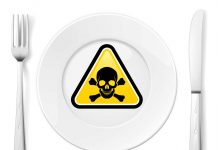Bacteria and viruses are the most common causes of foodborne illness. While bacteria and viruses can both cause mild to serious infections, they are very different from each other.
Perhaps the most important difference between bacteria and viruses is that antibiotic drugs usually kill bacteria, but they aren’t effective against viruses.
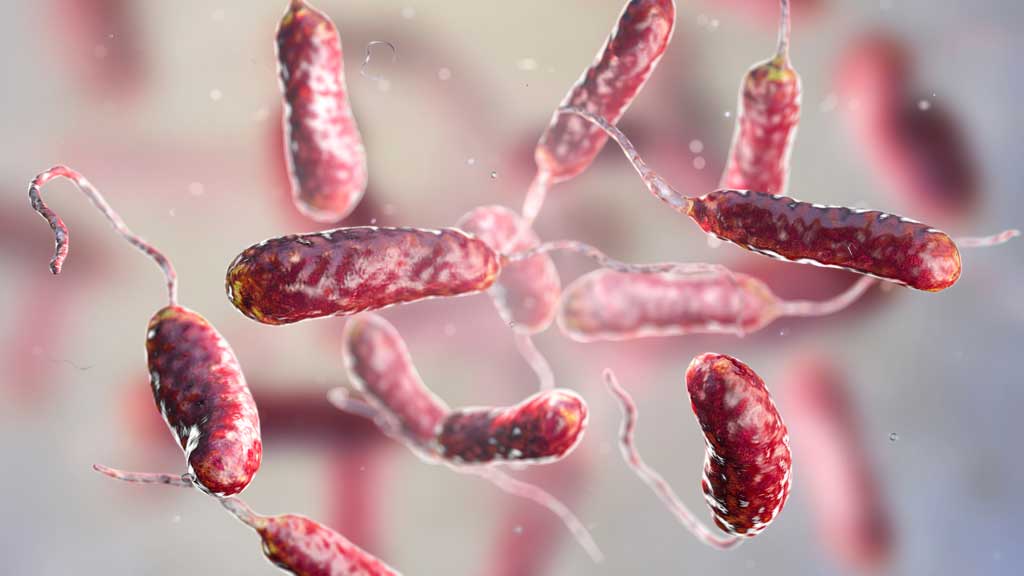


Types of microorganisms that cause foodborne illness
Microorganisms that cause foodborne illness are basically divided into seven groups:
- Bacteria: Bacteria (singular bacterium) are unicellular organisms. The cells are described as prokaryotic because they lack a nucleus. They exist in four major shapes: bacillus (rod shape), coccus (spherical shape), spirilla (spiral shape), and vibrio (curved shape).
- Viruses: Viruses are noncellular entities that consist of a nucleic acid core (DNA or RNA) surrounded by a protein coat. Although viruses are classified as microorganisms, they are not considered living organisms. Viruses cannot reproduce outside a host cell and cannot metabolize on their own.
- Archaea: Archaea or Archaebacteria differ from true bacteria in their cell wall structure and lack peptidoglycans. They are prokaryotic cells with avidity to extreme environmental conditions.
- Protozoa: Protozoa are unicellular aerobic eukaryotes. They have a nucleus, complex organelles, and obtain nourishment by absorption or ingestion through specialized structures.
- Fungi: Fungi (mushroom, molds, and yeasts) are eukaryotic cells (with a true nucleus).
- Algae: Algae, also called cyanobacteria or blue-green algae, are unicellular or multicellular eukaryotes that obtain nourishment by photosynthesis. They live in water, damp soil, and rocks and produce oxygen and carbohydrates used by other organisms.
- Multicellular Animal Parasites: A group of eukaryotic organisms consisting of the flatworms and roundworms, which are collectively referred to as the helminths. Although they are not microorganisms by definition, since they are large enough to be easily seen with the naked eye, they live a part of their life cycle in microscopic form.
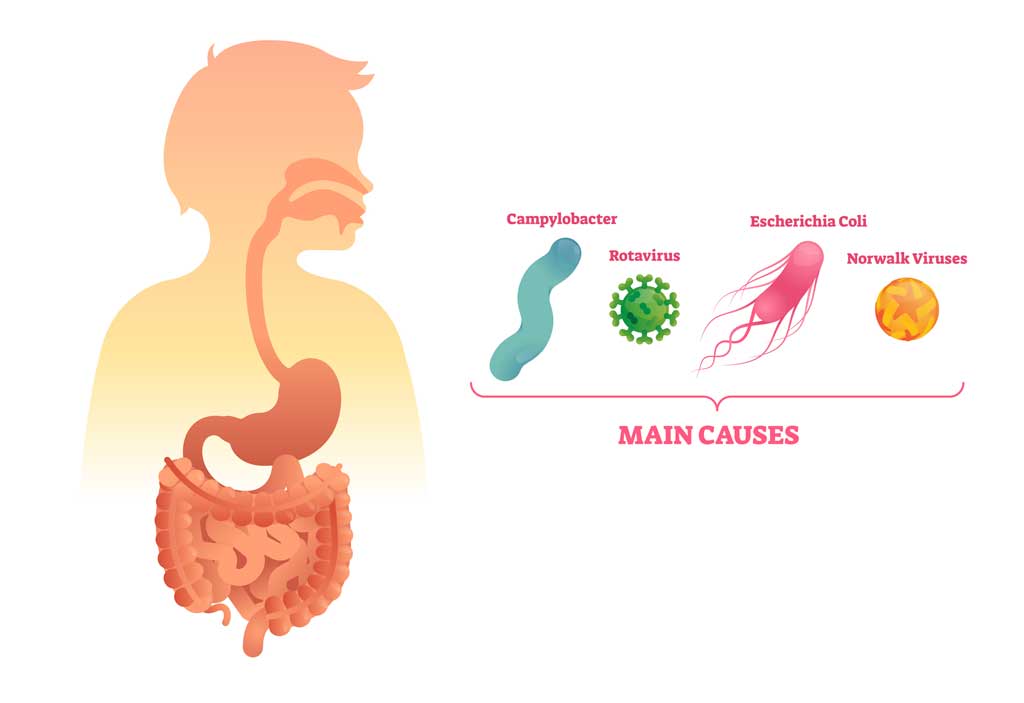


Pathogenic Microorganisms
Microorganisms are also categorized according to their activity (i.e., “pathogenic”, “spoilage”, and “useful”).
Pathogenic microorganisms are disease-causing microorganisms (bacteria, viruses, and parasites). A pathogen is a biological agent that causes disease or illness to its host, and possibly may even cause death. Illness is caused by living microorganism or toxin (microbial waste product) being consumed to cause symptoms associated with specific microorganism.
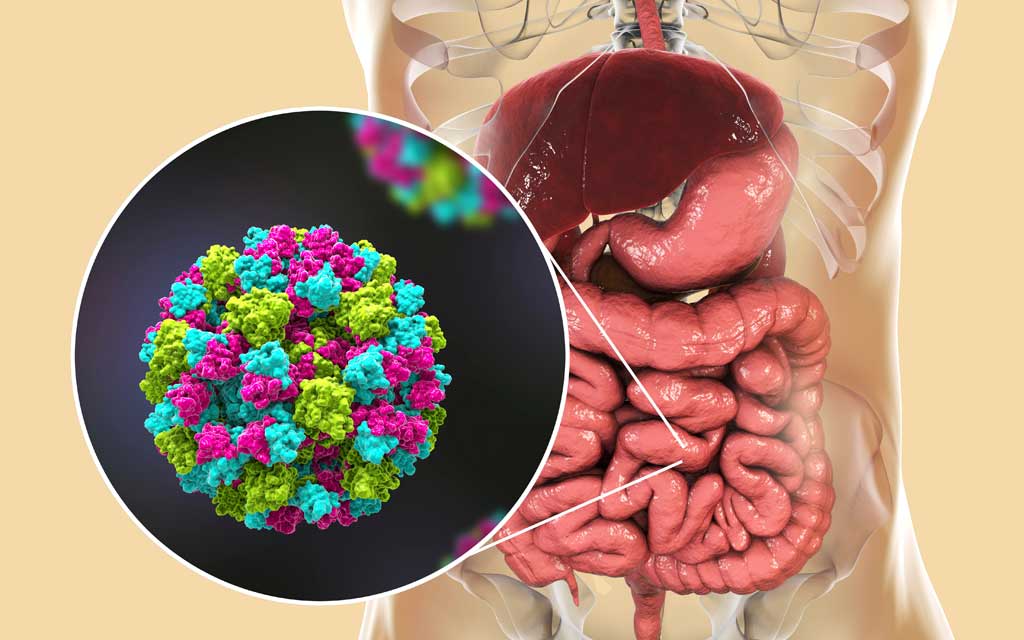


Differences Between Bacteria and Viruses Chart
Bacteria and viruses are both microscopic organisms that can cause illness and disease in humans. While they are both microorganisms, they are very different.
Bacteria | Viruses |
|---|---|
| Prokaryotic Cells | Viruses are not cells but non-living, infectious particles |
| Bacteria are typically much larger than viruses and can be viewed under a light microscope. Their sizes range from 200-1000 nanometers. | Viruses are about 1,000 times smaller than bacteria. Viruses are among the smallest infectious agents. Their sizes range from 20 to 300 nanometers. Most viruses cannot be seen by light microscopy can only be seen by electron microscopy. Pathogenesis |
| Most bacteria are harmless or often beneficial, but some bacteria are pathogenic, or cause human disease. | Unlike bacteria, most viruses cause human disease. |
| Bacteria reproduce asexually (through fission) independently of other organisms. Binary fission involves the division of a single cell, which results in the formation of two cells that are genetically identical. | Viruses can not exist independently of other organisms as they must take over a living cell in order to reproduce. A virus attaches itself to cells and usually reprograms them to reproduce itself. Viruses do not have cells that divide. New viruses are assembled in the infected host cell. |
| Bacteria grow more favorably in foods that are warm, moist, protein-rich, and low in acid. | Viruses can only multiply inside living cells of other organisms and do not multiply in or on foods. |
| Bacillus cereus, Campylobacter, Clostridium perfringens, E. Coli, Listeria monocytogenes, | Salmonella, Shigella, Staphylococcus aureus, Vibrio, and Yersinia enterocolitica hepatitis A, norovirus, and rotavirus |
Foodborne Illness Statistics
The CDC estimates that each year 48 million people get sick from a foodborne illness, 128,000 are hospitalized, and 3,000 die.
To prevent foodborne illness, it is necessary to understand how food becomes unsafe to eat and what proactive measures can be taken to keep food safe.
- Learn about proper hygiene, cross contamination, cold and hot food safety, foodborne pathogens, and best practices to prevent foodborne illness.
- Food Manager Training & ANSI Certification - $99.00
- Food Handler Training - only $7.00!
- HACCP Training: 16hr/4hr/1hr
- Food Allergy Training - $15.00
- Enter Promo "train10off" at Checkout
Food Viruses and Bacteria
The chart below includes foodborne microorganisms that frequently cause illness:
| Organism | Onset Time After Ingesting | Signs & Symptoms | Duration | Food Sources |
|---|---|---|---|---|
| Bacillus cereus | 10-16 hrs | Abdominal cramps, watery diarrhea, nausea | 24-48 hours | Meats, stews, gravies, vanilla sauce |
| Campylobacter jejuni | 2-5 days | Diarrhea, cramps, fever, and vomiting; diarrhea may be bloody | 2-10 days | Raw and undercooked poultry, unpasteurized milk,contaminated water |
| Clostridium botulinum | 12-72 hours | Vomiting, diarrhea, blurred vision, double vision, difficulty in swallowing, muscle weakness. Can result in respiratory failure and death | Variable | Improperly canned foods, especially home-canned vegetables, fermented fish, baked potatoes in aluminum foil |
| Clostridium perfringens | 8–16 hours | Intense abdominal cramps, watery diarrhea | Usually 24 hours | Meats, poultry, gravy, dried or precooked foods, time and/or temperature-abused foods |
| Cryptosporidium | 2-10 days | Diarrhea (usually watery), stomach cramps, upset stomach, slight fever | May be remitting and relapsing over weeks to months | Uncooked food or food contaminated by an ill food handler after cooking, contaminated drinking water |
| Cyclospora cayetanensis | 1-14 days, usually at least 1 week | Diarrhea (usually watery), loss of appetite, substantial loss of weight, stomach cramps, nausea, vomiting, fatigue | May be remitting and relapsing over weeks to months | Various types of fresh produce (imported berries, lettuce, basil) |
| E. coli (Escherichia coli) producing toxin | 1-3 days | Watery diarrhea, abdominal cramps, some vomiting | 3-7 or more days | Water or food contaminated with human feces |
| E. coli O157:H7 | 1-8 days | Severe (often bloody) diarrhea, abdominal pain and vomiting. Usually, little or no fever is present. More common in children 4 years or younger. Can lead to kidney failure. | 5-10 days | Undercooked beef (especially hamburger), unpasteurized milk and juice, raw fruits and vegetables (e.g. sprouts), and contaminated water |
| Hepatitis A | 28 days average (15-50 days) | Diarrhea, dark urine, jaundice, and flu-like symptoms, i.e., fever, headache, nausea, and abdominal pain | Variable, 2 weeks-3 months | Raw produce, contaminated drinking water, uncooked foods and cooked foods that are not reheated after contact with an infected food handler; shellfish from contaminated waters |
| Listeria monocytogenes | 9-48 hrs for gastro-intestinal symptoms, 2-6 weeks for invasive disease | Fever, muscle aches, and nausea or diarrhea. Pregnant women may have mild flu-like illness, and infection can lead to premature delivery or stillbirth. The elderly or immunocompromised patients may develop bacteremia or meningitis. | Variable | Unpasteurized milk, soft cheeses made with unpasteurized milk, ready-to-eat deli meats |
| Noroviruses | 12-48 hrs | Nausea, vomiting, abdominal cramping, diarrhea, fever, headache. Diarrhea is more prevalent in adults, vomiting more common in children. | 12-60 hrs | Raw produce, contaminated drinking water, uncooked foods and cooked foods that are not reheated after contact with an infected food handler; shellfish from contaminated waters |
| Salmonella | 6-48 hours | Diarrhea, fever, abdominal cramps, vomiting | 4-7 days | Eggs, poultry, meat, unpateurized milk or juice, cheese, contaminated raw fruits and vegetables |
| Shigella | 4-7 days | Abdominal cramps, fever, and diarrhea. Stools may contain blood and mucus. | 24-48 hrs | Raw produce, contaminated drinking water, uncooked foods and cooked foods that are not reheated after contact with an infected food handler |
| Staphylococcus aureus | 1-6 hours | Sudden onset of severe nausea and vomiting. Abdominal cramps. Diarrhea and fever may be present. | 24-48 hours | Unrefrigerated or improperly refrigerated meats, potato and egg salads, cream pastries |
| Vibrio parahaemolyticus | 4-96 hours | Watery (occasionally bloody) diarrhea, abdominal cramps, nausea, vomiting, fever | 2-5 days | Undercooked or raw seafood, such as shellfish |
| Vibrio vulnificus | 1-7 days | Vomiting, diarrhea, abdominal pain, bloodborne infection. Fever, bleeding within the skin, ulcers requiring surgical removal. Can be fatal to persons with liver disease or weakened immune systems. | 2-8 days | Undercooked or raw seafood, such as shellfish (especially oysters) |
People (Groups) Vulnerable to Foodborne Illness
Foodborne illness can affect anyone who eats contaminated food. However, certain populations are more susceptible to becoming ill with a greater severity of illness. These groups include:
- Pregnant women;
- Infants and young children;
- Older adults;
- People taking certain kinds of medications or with immune systems weakened from medical conditions, such as diabetes, liver disease, kidney disease, organ transplants, HIV/AIDS, or from receiving chemotherapy or radiation treatment.
Most people with a foodborne illness get better without medical treatment, but people with severe symptoms should see their doctor.
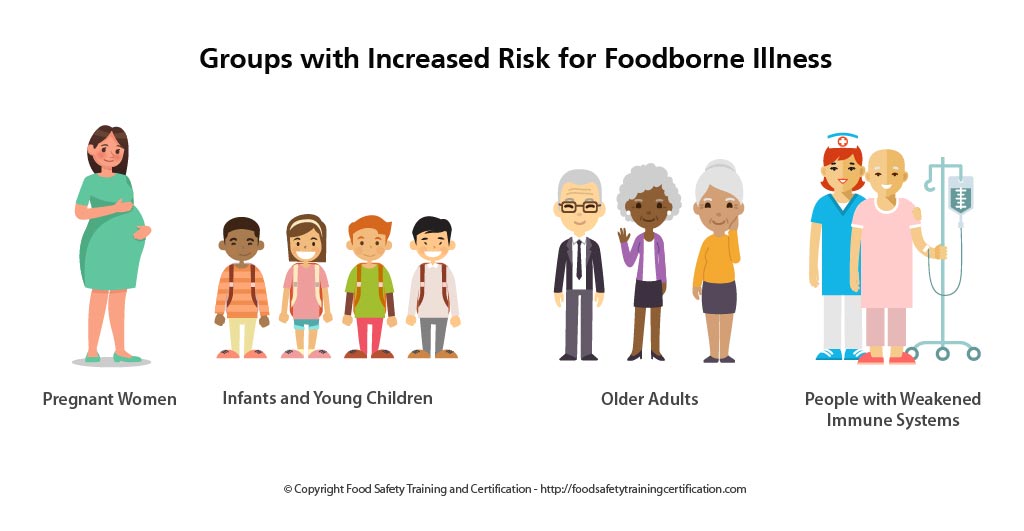


These vulnerable groups should take extra precautions and avoid the following foods:
- Raw or rare meat and poultry;
- Raw or undercooked fish or shellfish;
- Raw or undercooked eggs or foods containing them ( cookie dough and homemade ice cream);
- Fresh sprouts;
- Unpasteurized ciders or juices;
- Unpasteurized milk and milk products;
- Uncooked hot dogs.
Summary
It is very important to understand what, why, and how foods can make you sick. Bacteria and viruses are the most common causes of foodborne illness. While bacteria and viruses can both cause mild to serious infections, they are very different from each other.
Additional Resources
- The Bad Bug Book. U.S. Food & Drug Administration. Center for Food Safety & Applied Nutrition. Retrieved July 7, 2019, from https://www.fda.gov/media/83271/download
- Wikipedia contributors. Bacteria. In Wikipedia, The Free Encyclopedia. Retrieved February 4, 2020, from https://en.wikipedia.org/w/index.php?title=Bacteria&oldid=938610666
- Wikipedia contributors. Virus. In Wikipedia, The Free Encyclopedia. Retrieved February 4, 2020, from https://en.wikipedia.org/w/index.php?title=Virus&oldid=939104133
- Wikipedia contributors. Bacterial cell structure. In Wikipedia, The Free Encyclopedia. Retrieved January 28, 2020, from https://en.wikipedia.org/w/index.php?title=Bacterial_cell_structure&oldid=936356184
Wikipedia contributors. Prokaryote. In Wikipedia, The Free Encyclopedia. Retrieved January 28, 2020, from https://en.wikipedia.org/w/index.php?title=Prokaryote&oldid=937580869





